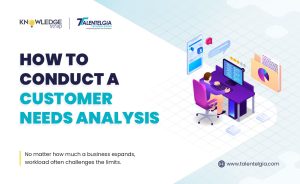Imagine you are feeling sick and you need to see a doctor. But instead of going to the hospital or the clinic, you just open an app on your phone and connect with a doctor online. The doctor can diagnose your condition, prescribe you medication, and monitor your recovery remotely.
Or imagine you have a chronic disease and you need to manage your health regularly. But instead of visiting your doctor every month or every week, you just wear a device that tracks your vital signs, symptoms, and medication intake. The device can send the data to your doctor, who can adjust your treatment plan accordingly.
Or imagine you are a researcher or a policymaker and you need to analyze the health data of millions of people. But instead of spending hours or days crunching numbers, you just use an artificial intelligence system that can process the data and generate insights, predictions, and recommendations.
These are not science fiction scenarios. These are real examples of how healthcare software development is transforming the healthcare industry. Healthcare software development is the process of creating software solutions that can improve the quality, efficiency, and accessibility of healthcare services. It can range from telemedicine and e-prescription to artificial intelligence and blockchain.
In this blog post, we will explore the growth of healthcare software development industry and how you can maximize your growth potential in this field. Whether you are a healthcare software developer, a healthcare software company, or a healthcare software user, this post will give you some valuable tips and insights on how to succeed in this booming market.
What is Healthcare Software Development and Why is it Growing?
Healthcare software development is one of the most dynamic and innovative sectors in the IT industry. It involves creating software solutions that can improve the quality, efficiency, and accessibility of healthcare services.
Healthcare software development can range from telemedicine and e-prescription to artificial intelligence and blockchain.
The global healthcare software development market is expected to grow at a compound annual growth rate (CAGR) of 8% from 2022 to 2027, reaching $974.5 billion by 2027. This growth is driven by several factors, such as:
- The increasing demand for digital health solutions due to the COVID-19 pandemic, which has accelerated the adoption of telehealth, remote patient monitoring, and mobile health applications.
- The rising need for interoperability and data integration among different healthcare systems, which can enhance the coordination and collaboration of care delivery.
- The growing use of artificial intelligence (AI) and machine learning (ML) in healthcare, which can provide insights, predictions, and recommendations for diagnosis, treatment, and management of various health conditions.
- The emergence of blockchain technology in healthcare, can offer security, transparency, and traceability for health data and transactions.
- The proliferation of Internet of Things (IoT) devices in healthcare, which can collect and transmit real-time health data from patients, devices, and environments.
These factors create huge opportunities for healthcare software developers to create innovative solutions that can solve the challenges and meet the needs of the healthcare industry. However, they also pose some challenges and risks that need to be addressed carefully.
Some of these challenges include:
- The complexity and diversity of healthcare systems, which require high standards of quality, reliability, usability, scalability, compatibility, compliance, security, privacy, ethics, etc.
- The fast-changing nature of healthcare technologies, which require constant learning, updating, testing, debugging, deploying, maintaining, etc.
- The high competition and low differentiation in the healthcare software market, which requires effective marketing, branding, pricing, positioning, etc.
- The high expectations and low trust from the healthcare users (patients, providers, payers), which require clear communication, feedback, support, etc.
To overcome these challenges and seize these opportunities, healthcare software developers need to adopt some best practices and strategies that can help them maximize their growth potential in this industry.
How to Maximize Your Growth in Healthcare Software Development Industry
As a healthcare software developer, you may face several challenges and opportunities in this fast-changing and competitive market. To maximize your growth potential, you need to:
Stay Updated with the Latest Trends and Technologies
Healthcare software development is a field that is constantly evolving and innovating. You need to stay on top of the latest trends and technologies that are shaping the healthcare industry and the healthcare software market.
You can follow industry reports, blogs, podcasts, webinars, and newsletters that cover the latest developments and innovations in this field. You can also attend conferences, workshops, and hackathons that offer networking and learning opportunities with other professionals and experts.
Get Ahead with the Ultimate Whitepaper! Download Now by Simply Tapping the Image!

Focus on User-Centric Design and Development
Healthcare software development is not just about creating software solutions. It is about creating software solutions that can solve the problems and meet the needs of your target users, such as patients, providers, payers, or regulators.
You need to understand the needs, preferences, and expectations of your target users. You need to conduct user research, testing, and feedback to ensure that your software solutions are user-friendly, intuitive, and engaging. You also need to comply with the relevant standards, regulations, and best practices for healthcare software development.
Some of the methods and tools that you can use are:
- User personas: A user persona is a fictional representation of your ideal user, based on real data and research. It helps you understand who your user is, what they want, and how they behave. You can use tools like [Xtensio] or [Userforge] to create user personas.
- User stories: A user story is a short description of a feature or a functionality from the perspective of a user. It helps you define what your user needs and why they need it. You can use tools like [Jira] or [Trello] to create and manage user stories.
- User journey maps: A user journey map is a visual representation of the steps that a user takes to achieve a goal with your software solution. It helps you understand how your user interacts with your solution and what pain points or opportunities they encounter along the way. You can use tools like [UXPressia] or [Smaply] to create user journey maps.
- Wireframes: A wireframe is a low-fidelity sketch of the layout and structure of your software solution. It helps you plan and organize the content and functionality of your solution. You can use tools like [Balsamiq] or [Sketch] to create wireframes.
- Prototypes: A prototype is a high-fidelity mockup of your software solution that simulates its look and feel. It helps you test and validate your solution with real users and get feedback. You can use tools like [InVision] or [Figma] to create prototypes.
By focusing on user-centric design and development, you can create solutions that are not only functional and reliable, but also delightful and satisfying for your users.
Read also – How do you choose the right SAAS partner for your business?
Leverage Cloud Computing and SaaS Models
Cloud computing can offer scalability, flexibility, and cost-effectiveness for your software development projects. You can use cloud-based platforms and tools that can facilitate your development process, such as coding, testing, deployment, and maintenance.
You can also adopt software as a service (SaaS) models that can provide recurring revenue streams and customer retention for your software solutions.
Some of the benefits of cloud computing and SaaS models are:
- Reduced infrastructure costs: You don’t need to invest in expensive hardware or software to run your solutions. You can use cloud services that charge you based on usage or subscription.
- Increased performance and reliability: You don’t need to worry about downtime or data loss. You can use cloud services that offer high availability, redundancy, backup, and recovery.
- Enhanced security and compliance: You don’t need to deal with complex security issues or regulations. You can use cloud services that offer encryption, authentication, authorization, auditing, and compliance.
- Faster time to market: You don’t need to spend time on setting up or managing your infrastructure. You can use cloud services that offer ready-to-use tools and frameworks that speed up your development process.
- Easier scalability and growth: You don’t need to worry about capacity or demand issues. You can use cloud services that offer elastic scaling and load balancing that adjust to your needs.
Some of the cloud platforms and tools that you can use are:
- [Amazon Web Services (AWS)]: AWS is a leading cloud platform that offers a wide range of services for computing, storage, and database.
- [Microsoft Azure]: Azure is another leading cloud platform that offers a wide range of services for computing, storage, database, analytics, AI, IoT, etc.
- [Google Cloud Platform (GCP)]: GCP is a cloud platform that offers a wide range of services for computing, storage, database, analytics, AI, ML, etc.
- [Firebase]: Firebase is a cloud platform that offers various tools and services for mobile and web development, such as authentication, database, storage, hosting, analytics, etc.
- [Heroku]: Heroku is a cloud platform that offers a simple and easy way to deploy, manage, and scale web applications using various languages and frameworks.
- [Stripe]: Stripe is a cloud-based payment platform that offers various APIs and tools for online payment processing, billing, subscription management, fraud prevention, etc.
By leveraging cloud computing and SaaS models, you can reduce your operational costs and risks, and increase your performance and revenue.
Read also – How to Choose the Best Taxi App Development Company in 2023
Collaborate with Other Stakeholders and Partners
Healthcare software development is a complex and multidisciplinary field that requires collaboration with various stakeholders and partners. You need to establish strong relationships with your clients, customers, suppliers, vendors, investors, regulators, and competitors. You need to communicate effectively and transparently with them to ensure mutual understanding and alignment of goals. You also need to seek opportunities for co-creation, co-innovation, and co-marketing with them.
Some of the benefits of collaboration are:
- Improved quality and efficiency: You can leverage the expertise, resources, and feedback of your partners to improve the quality and efficiency of your software solutions.
- Increased innovation and differentiation: You can explore new ideas, technologies, and markets with your partners to create innovative and differentiated software solutions.
- Expanded reach and impact: You can access new customers, channels, and regions with your partners to increase the reach and impact of your software solutions.
Some of the methods and tools that you can use are:
- Agile methodology: Agile methodology is a software development approach that emphasizes collaboration, flexibility, and customer satisfaction. It involves breaking down the project into small and iterative cycles called sprints, where the team works together to deliver working software increments. You can use tools like [Scrum] or [Kanban] to implement agile methodology.
- Version control: Version control is a software development practice that tracks and manages the changes made to the source code of your software solution. It allows you to collaborate with other developers on the same project without overwriting or losing each other’s work. You can use tools like [Git] or [Subversion] to implement version control.
- Code review: Code review is a software development practice that involves examining and evaluating the source code of your software solution by other developers. It helps you improve the quality, readability, security, and performance of your code. You can use tools like [GitHub] or [Bitbucket] to conduct code reviews.
- Testing: Testing is a software development practice that involves checking and verifying the functionality, usability, reliability, security, and performance of your software solution. It helps you identify and fix any errors or bugs in your code. You can use tools like [Selenium] or [JUnit] to perform testing.
- Documentation: Documentation is a software development practice that involves creating and maintaining written or visual information about your software solution. It helps you communicate the purpose, features, functionality, usage, installation, maintenance, etc. of your software solution to your partners and users. You can use tools like [Markdown] or [LaTeX] to create documentation.
By collaborating with other stakeholders and partners, you can create synergies and value that can benefit all parties involved.
Conclusion
Healthcare software development is a booming industry that offers immense opportunities for growth and innovation. By staying updated with the latest trends and technologies, focusing on user-centric design and development, leveraging cloud computing and SaaS models, and collaborating with other stakeholders and partners, you can maximize your growth potential in this industry.
We hope you enjoyed reading this blog post and learned something useful from it. If you have any questions or comments, please feel free to contact Talentelgia team of experts.
Thank you.







